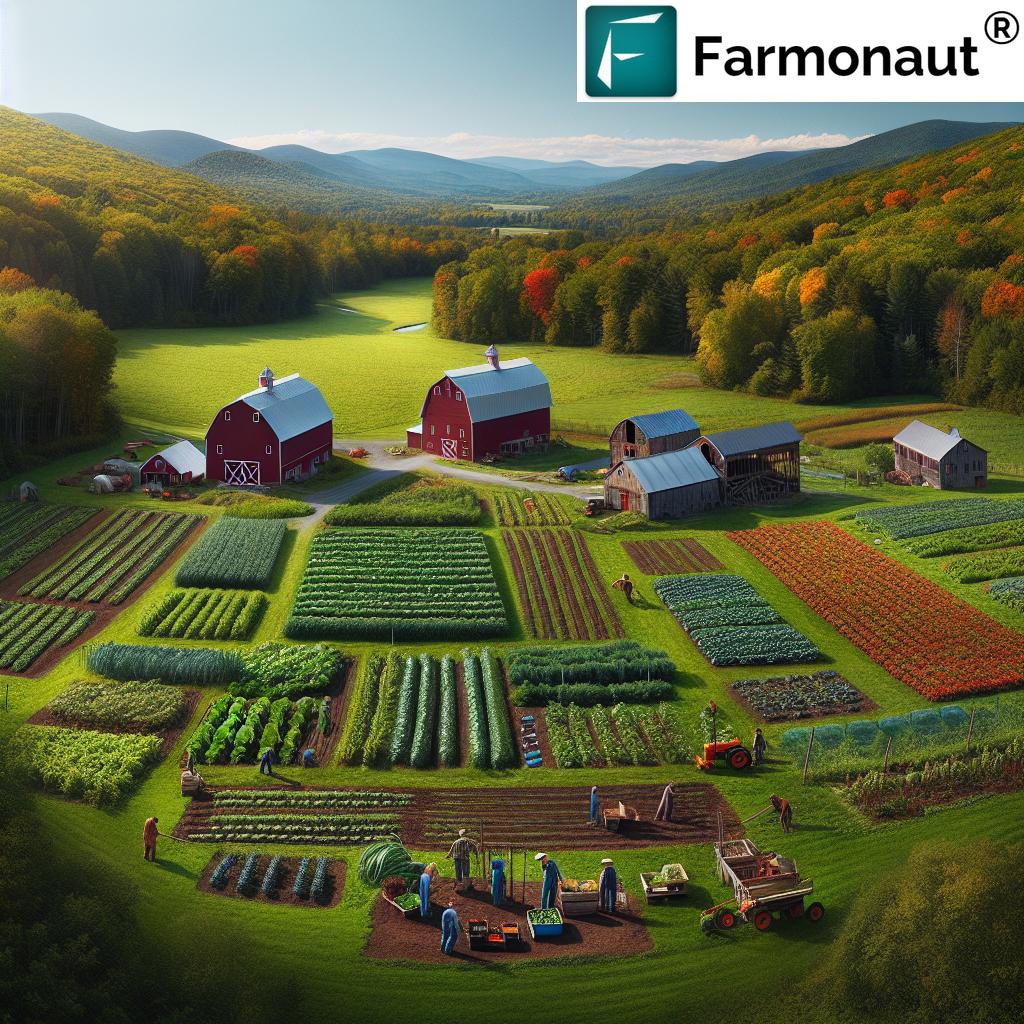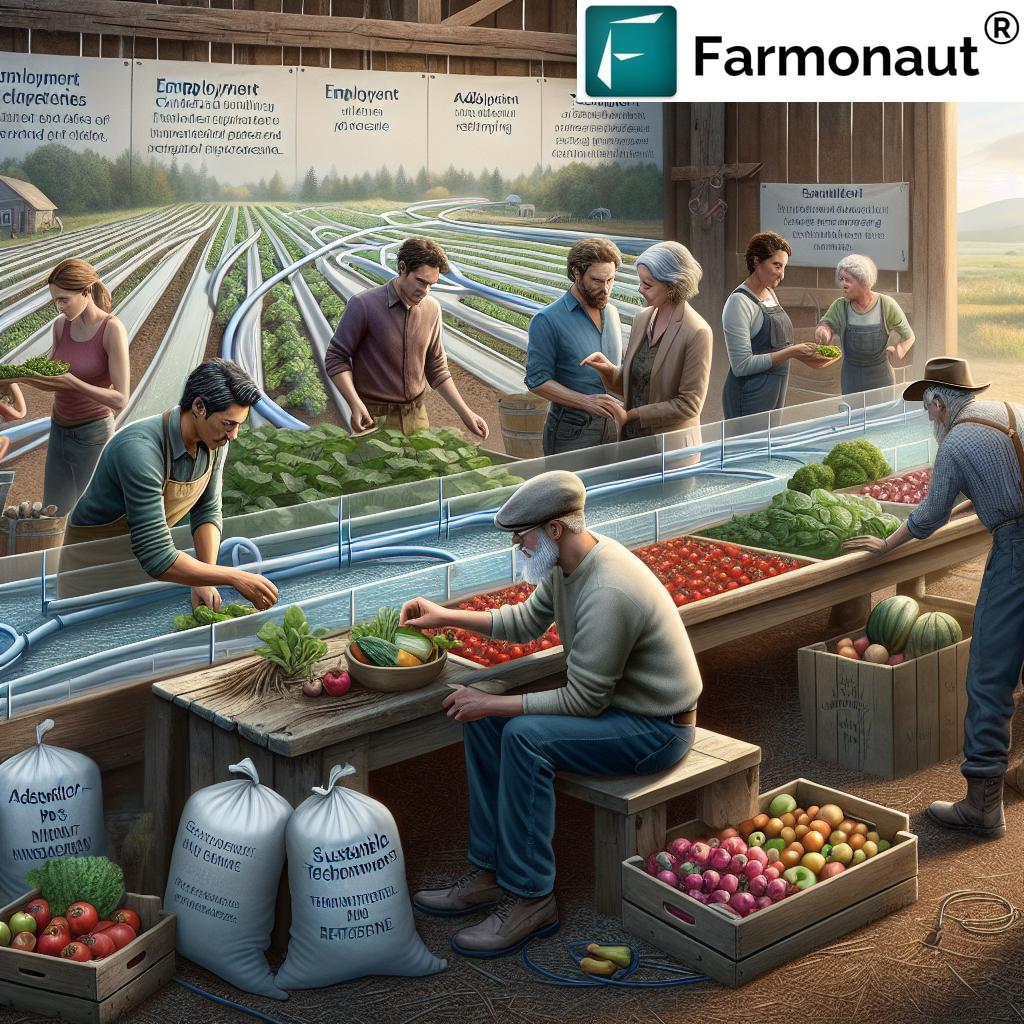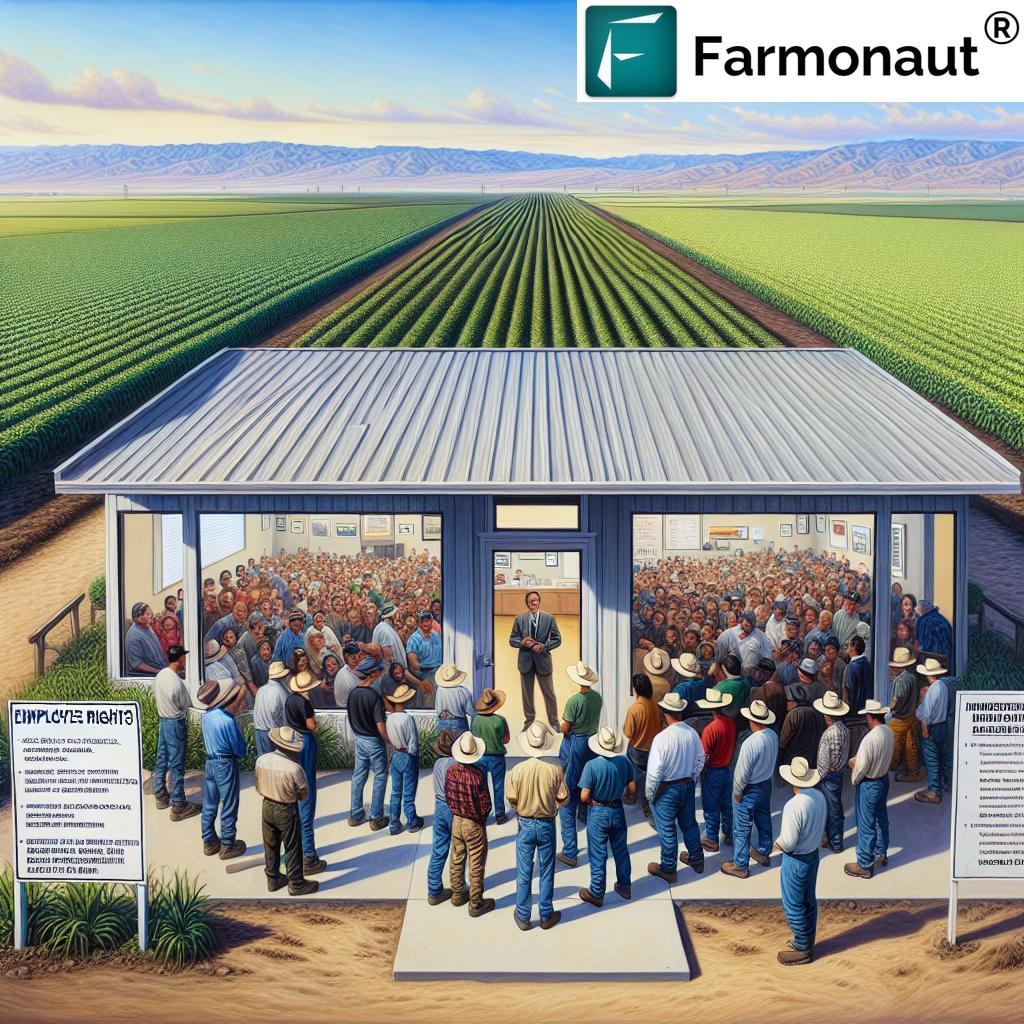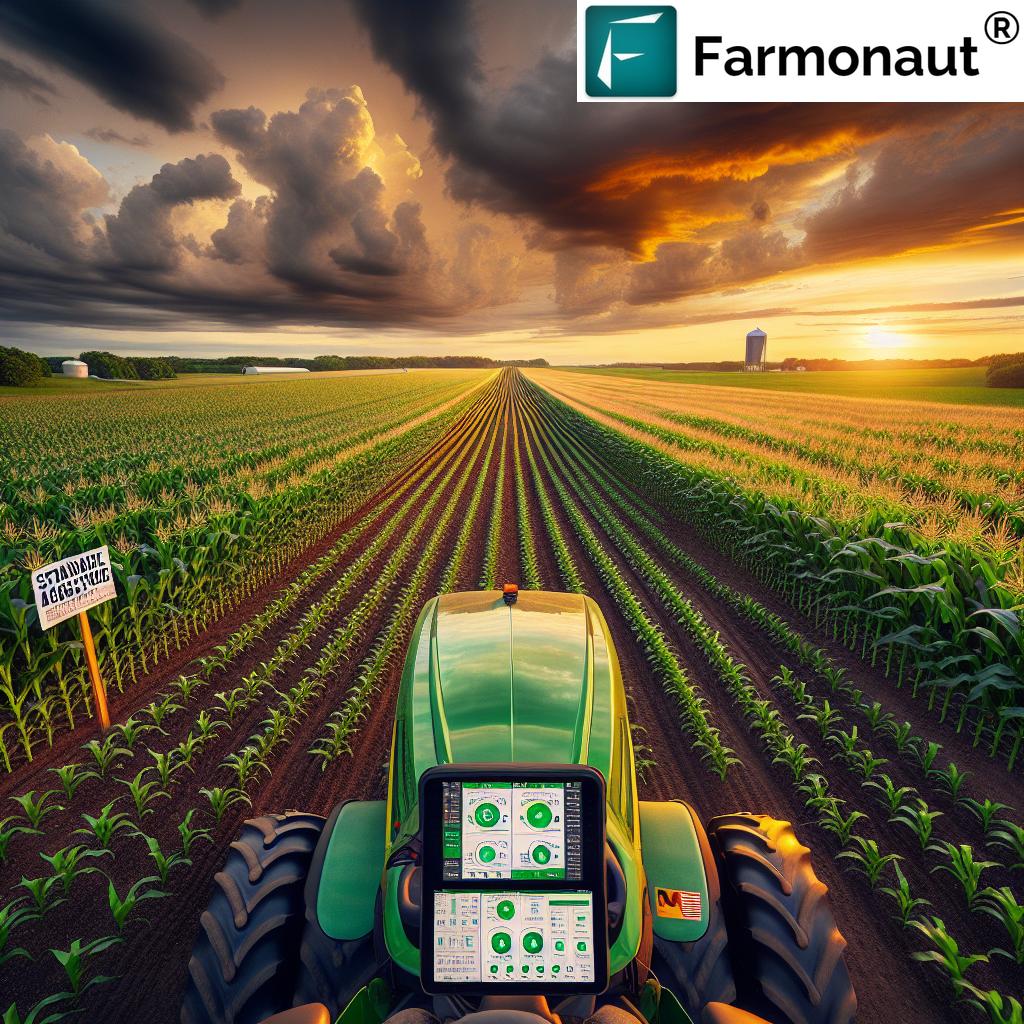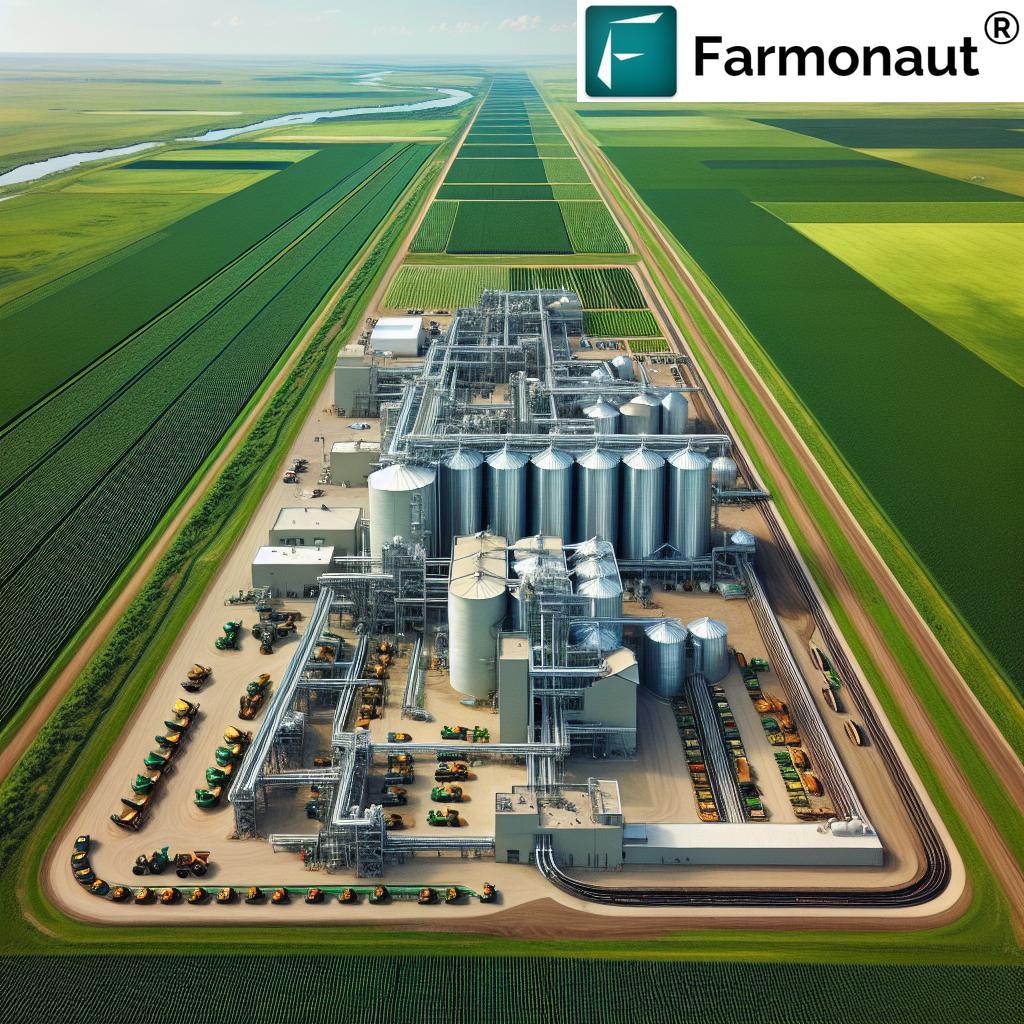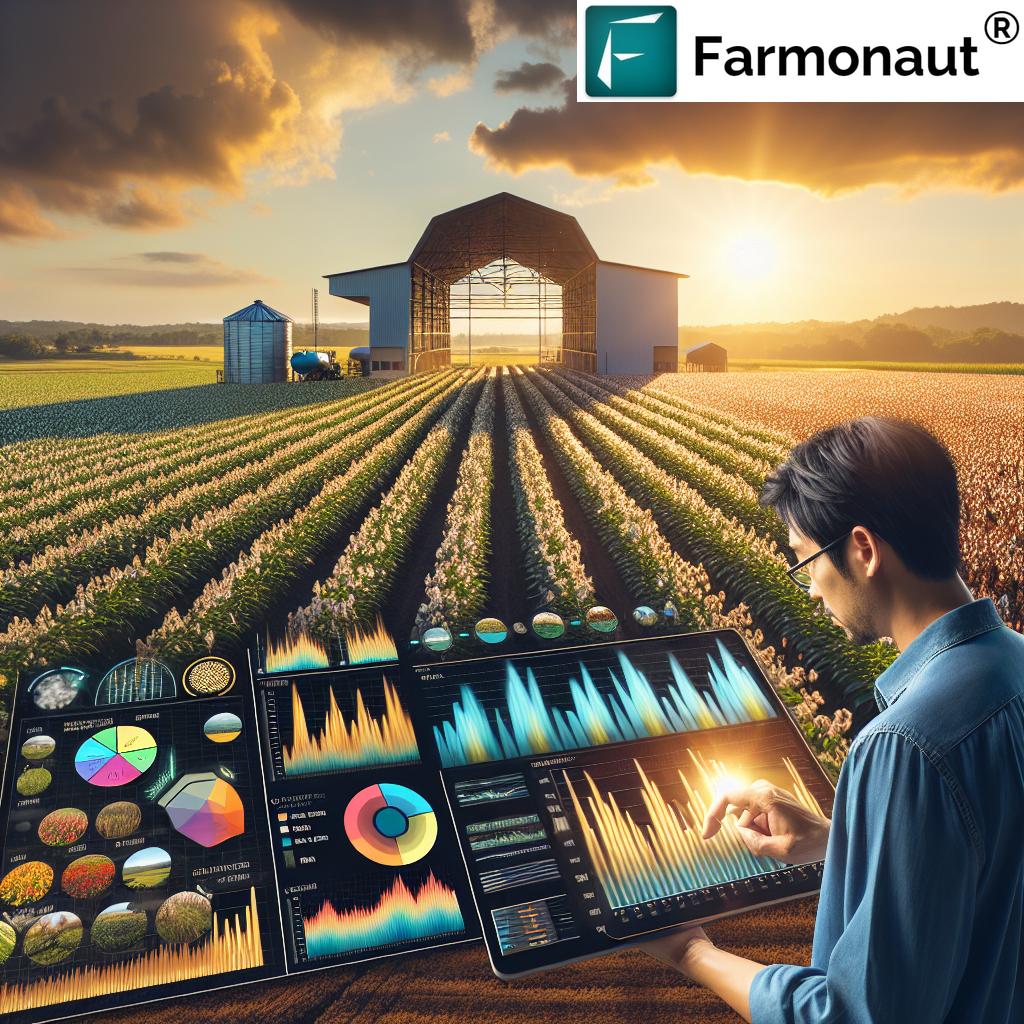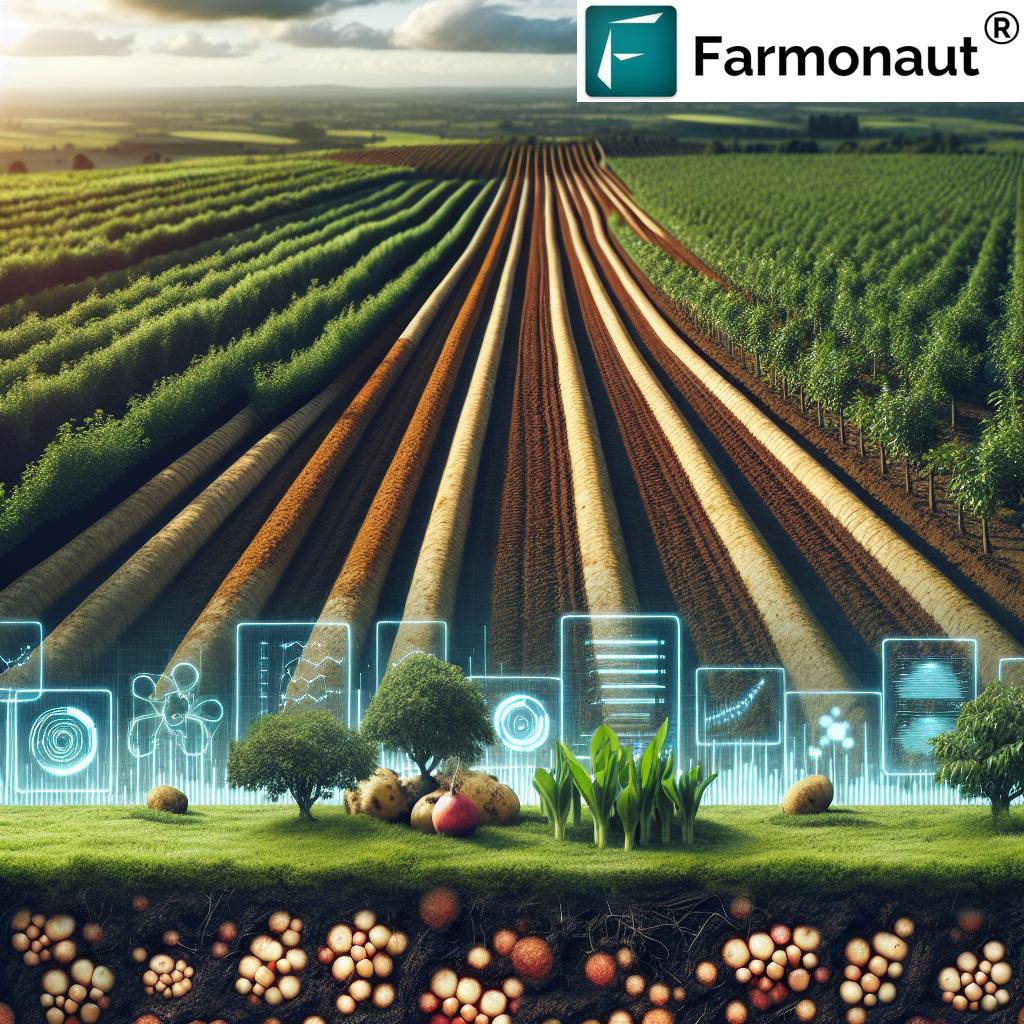Vermont Farms: 7 Inspiring Stories of Sustainable Community Life
“Over 1,200 Vermont farms have adopted sustainable practices to combat land loss and farm retirement in recent years.”
Introduction: The Heartbeat of Vermont Farms
Vermont farms are more than just a patchwork of fields, barns, and silos—they are the lifeblood of our northern New England landscape, culture, and economy. As we explore these green hills, we find ourselves swept up in the stories of our farming community, dedicated to sustainable agriculture and a deep-rooted connection to the land and soil. Our journey takes us alongside the multi-generational stewards of the land, young farmers in Vermont stepping up to face new-age challenges, and resilient farm workers whose days begin with sunrise chores and end with the last animal tended at dusk.
Farm life in New England is evolving. We see it in the vibrant farmer’s markets, community supported agriculture (CSA) shares brimming with local produce, and the innovative adoption of technology such as GIS, satellite monitoring, and even blockchain-based traceability to reinforce sustainability and transparency. We’re invited to witness not just how our food is grown, but the daily realities, challenges, and joys of those whose livelihoods are formed by northern Vermont agriculture.
Farm Life in New England on Stage: The Vermont Farm Project
Our stories echo beyond the barn—right onto the stage. Northern Stage’s musical, “The Vermont Farm Project”, brings the passions, concerns, and unique culture of the farming community in Vermont to an audience eager to learn and connect.
Set over a single day and woven through original indie-folk music, this production is more than theatrical entertainment: it’s an authentic portrait of a resilient, evolving way of life. The creative team spent years interviewing nearly 50 local farmers and farm workers, asking:
- What does a day in your life look like?
- What challenges keep you up at night—farm retirement, land access, or succession?
- How do evolving sustainable farming practices impact your soil, irrigation methods, and resource management?
- What brings you hope, joy, and belonging within your community?
This collective storytelling immerses us in the real Vermont sound: not only do farm tools and real pickup trucks belong on stage, but so do fiddles, guitars, and upright bass—the very instruments often found in Vermont’s working barns.
Challenges Facing Vermont Farms: Land, Retirement, and Community
While the romance of farm life runs deep in the Green Mountains, our interviews revealed the real pressures facing Vermont farms and broader northern Vermont agriculture. These are challenges shared by family-run operations, new farm owners, and the migrant labor force making up a vital part of farm employment.
The Difficult Path of Farm Retirement
Time and again, our community voices echoed the concern: “What becomes of the farm when we’re ready for retirement?” For many longstanding Vermont family operations, farm retirement does not mean a simple end to work, but a profound question of legacy. The children of farmers may choose different paths, so careful stewardship and creative problem-solving are needed to keep these lands productive, cared for, and in the hands of those willing to continue sustainable farming practices.
Land Access, Real Estate, and Retention
The cost of Vermont land and soil puts additional pressure on the next generation. Aspiring young farmers in Vermont face daunting financial challenges: real estate prices, high taxation, and the capital required for equipment, irrigation technology, and critical infrastructure. Programs supporting affordable access, conservation, and land trusts are crucial to ensuring our rural landscape does not become a patchwork lost to urbanization or speculation.
Sustainable Inputs, Soil Health, and Environmental Stewardship
Our farms depend on healthy soil, balanced inputs, and ongoing innovations in pest, disease, and weed management. Sustainable farming practices, organic certifications, and advances like satellite crop health monitoring provide the tools to protect our environment while improving yields. Yet, every Vermont farm wrestles with finding the right mix of tradition and change: crop rotation, no-till practices, and water-wise irrigation are part of this evolving story.
Proud Community, But Challenged Workforce
Farm workers and employment are foundational. Migrant dairy workers, local hands, and seasonal youth all play a critical role in the cycle of chores, harvest, and community events. Providing fair wages, safe conditions, and opportunities for professional growth are essential to sustaining the vibrancy of our agricultural scene—and ensuring the joys and demands of farm life are shared by all.
7 Inspiring Stories from Vermont Farms
Let’s journey through a day, meeting seven interconnected voices that reflect the rich tapestry of Vermont’s farming community:
-
Kim & Glenn – The Legacy Stewards
- Multi-generational dairy farmers who dedicate their lives to their land but stand at a crossroads. With their children choosing other professions, the challenge of passing down both land and tradition looms large. Their story embodies the bittersweet reality of farm retirement risk common to Vermont farms.
-
Matt & Kenza – Young Farmers in Vermont
- This millennial couple, new owners of a small diversified farm, share what it means to juggle a growing family with budding agricultural ambitions. They bring vibrancy and innovative practices to the region—investing in organic certification, modern irrigation, GIS mapping for crop planning, and sustainable inputs. Their courage lights a path forward for the next generation of Vermont farmers.
-
Gabriella – The Migrant Dairy Worker
- A vital presence on one of northern Vermont’s larger dairy farms, Gabriella keeps the rhythms of farm chores flowing despite being far from family. Now offered a farm manager role, her story brings into focus the experiences of migrant workers, the value of diverse agricultural employment, and the tough decisions facing those who keep our food systems running.
-
Tara, Hunter & Mo – The College Summer Hands
- These three college students, working a summer in central Vermont, offer laughter, fresh perspective, and strong hands to their host farm. Their journey highlights the ever-present need for reliable labor during busy seasons, as well as creative ways Vermont farms engage youth and build appreciation for agricultural careers.
-
Sally – The Vegetable Co-op Organizer
- Sally’s story brings us into the heart of Vermont’s CSA movement and the power of community supported agriculture Vermont style. Her organic vegetable co-op weaves together member input, shared resources, and education events—strengthening local food systems and nourishing neighborhoods.
-
Owen – The Forestry and Permaculture Innovator
- Deep in the woodlands, Owen blends forestry with regenerative agroforestry. By managing mixed-use land, he protects wildlife, builds rich soils, and experiments with carbon-friendly methods that may be critical for Vermont’s agricultural future. His integration of new GIS tools, resource management, and a keen eye on traceability set a benchmark for sustainability.
-
The Farmer-Fiddler Collective – Where Music and Farming Meet
- We end our day as so many Vermont farms do—gathered after chores, instruments in hand, swapping stories, and sharing folk tunes that echo through the barn. Music weaves these narratives, reminding us that our farming community is deeply rooted in both tradition and innovation.
Sustainable Farming Practices in Northern Vermont Agriculture
So, what exactly defines sustainable farming practices on Vermont farms, and how do these approaches help us battle the threats of climate change, depletion of natural resources, and generational loss of knowledge?
- Soil Health Management: Practices like cover cropping, no-till farming, organic amendments, and regular monitoring keep Vermont land and soil thriving. With the latest crop health monitoring (NDVI analyses, etc.), farmers can minimize synthetic inputs and reduce risk of soil erosion and nutrient leaching.
- Smart Water Usage: Northern Vermont agriculture employs precise irrigation systems—from drip irrigation to catchment ponds—guided increasingly by satellite imagery and AI-powered advisories to optimize water use during drought and storms alike.
- Integrated Pest, Disease, and Weed Management: By diversifying crop rotations, selecting resistant varieties, using beneficial insects, and employing real-time monitoring, farmers reduce dependency on chemicals while improving yields.
- Agroforestry & Mixed-use Land: Incorporating forestry, pastures, and wild buffers guards against disease outbreaks, sequesters carbon, and preserves biodiversity, serving as a model for balancing productivity and environmental stewardship.
- Traceability and Transparency: Increasingly, Vermont growers leverage blockchain-based systems to prove the origins and journey of their products all the way to the consumer, ensuring brand trust while supporting sustainable, local agriculture.
- Community Connection: Sustainable farming is inseparable from its social impact—creating local employment, CSA shares, and co-op partnerships that feed our economy and communities.
The integration of these techniques helps us, as a farming community, not only adapt to change but also lead the way in sustainability—a crucial value for our consumers, financial partners, and future generations.
Discover Farmonaut’s Fleet Management Tools for cost savings and efficient rural logistics.


Farm Workers and Employment
In Vermont, every apple picked and every wheel of cheese made reflects countless hours contributed by a diverse workforce—migrant labor, local youth, and long-term employees. Community programs and fair labor initiatives are helping us build a more resilient, equitable farming culture, which is essential for supporting both current and future agricultural needs.
Inputs, Insurance, & Financing in Vermont Land and Soil
Access to affordable, quality crop loans and insurance is pivotal for northern Vermont farmers, especially those navigating unpredictable weather, soil conditions, and the high cost of land. Digital satellite verification tools are making these financial pathways more secure, reducing risk for lenders and enabling affordable premiums for producers.
“Vermont’s farming community contributes nearly $800 million annually to the state’s economy through sustainable agriculture.”
Modernizing Vermont Farms with Technology
The digital revolution has arrived for Vermont farms—and it’s fueling a new kind of resilience. Tools like satellite imagery, mobile crop health monitoring apps, and AI-powered advisory systems help both seasoned and beginning farmers maximize efficiency and sustainability.
- Affordable Precision Agriculture: Through easy-to-use web and mobile apps, Vermont farmers access real-time data on soil moisture, pest and disease risks, and optimal harvest windows. This democratizes technology previously reserved for large agri-corporations.
- Traceability: Consumers are demanding to know where their food comes from. Technological advances like blockchain-based traceability tools ensure transparency, helping Vermont farmers build brand trust with every carrot and wheel of artisan cheese.
- Resource and Fleet Management: Fleet-tracking and resource management solutions lower costs by ensuring that machinery and vehicles are deployed safely and efficiently—even across Vermont’s rolling and sometimes treacherous terrain.

Access real-time Satellite and Weather Data: Farmonaut API
Explore the API Developer Docs
Community Supported Agriculture Vermont & Initiatives
The heart of our farming community in Vermont beats strongest in collective efforts—where farmers, consumers, educators, and activists come together. Community Supported Agriculture (CSA) programs are popular across the state, giving local families direct access to the freshest produce and empowering growers to plan plantings, manage inputs, and invest in long-term land stewardship with confidence.
- CSA & Food Co-ops: By joining a CSA, Vermonters directly support local farmers and share both risk and bounty—creating a strong feedback loop between the land and consumer tables.
- Farm Education: Programs teaching children and adults about soil science, sustainable irrigation, and environmental stewardship ensure the next generation of Vermonters remain invested in and knowledgeable about responsible agriculture.
- Farm Festivals & Music Gatherings: Post-harvest, it’s common for communities to gather in celebration—whether at the town’s farmers market or barn dances featuring local musicians (many of whom are farmers themselves!). These traditions knit our communities together.
Comparative Profile Table of Sustainable Vermont Farms
| Farm Name | Location (Town/Region) | Size (Acres, estimated) | Main Sustainable Practices | Community Initiatives | Land Challenges | Estimated Years in Operation | Impact Highlights |
|---|---|---|---|---|---|---|---|
| Glenn Family Dairy | Washington County, VT | 220 | Rotational Grazing, Cover Crops, On-farm Composting | Farm Tours, School Workshops | Retirement Risk, Succession Uncertainty | 85 | Supports 8 local jobs, Protects 30+ wildlife habitat acres |
| Meadow Rise Farm | Chittenden County, VT | 55 | Certified Organic, Drip Irrigation, GIS Crop Mapping | CSA, Farm-to-School | Real Estate Cost, Access to Finance | 7 | Feeds 100+ CSA families, Employs 3 seasonal workers |
| Valle Verde Dairy | Franklin County, VT | 330 | Manure Management, Renewable Energy, Integrated Pest Mgmt | Migrant Worker Housing, Job Training | Labor Stability, Insurance | 15 | Offers year-round employment to 14 workers |
| Green Sprout Co-op | Addison County, VT | 25 | Permaculture, Organic Inputs, Mulching | CSA, Community Dinners, Workshops | Weed Pressure, Land Lease | 12 | Hosts >20 education events/year |
| Maple Groove Agroforestry | Lamoille County, VT | 90 (with woodlands) | Forest Integration, Carbon Footprinting, Soil Monitoring | Wildlife Corridors, Forest Education | Access to Tech, Market Volatility | 5 | Sequesters estimated 20t CO2/year, Maintains 50 wildlife acres |
| Cedar Ridge Summer Farm | Orange County, VT | 18 | Mixed Vegetables, Minimal Tillage, Organic Herbicides | Student Summer Jobs, Farmstand | Labor Availability, Short Season | 3 | Employs 6 students each summer |
| Harvest Harmony Collective | Caledonia County, VT | 60 | Integrated Cropping, Zero-Waste, Renewable Power | Folk Music Events, Food Bank Partnerships | Land Lease Security, Finance | 9 | Donates 2,000 lbs food/year; Hosts musicians monthly |
The Future of Farm Life in Vermont and Northern New England
We see clearly that the heartbeat of Vermont’s agricultural story is its capacity for reinvention and community resilience. Each farm, whether anchored by a family for generations or newly taken up by a passionate beginner, faces the cycles of the seasons, the demands of modern markets, and the unpredictability of climate—armed with everything from traditional wisdom to satellite-powered technology.
- Land & Law: Efforts in conservation easements, new legal frameworks for farm transfer, and community land trusts are becoming more common—offering answers to the pressing challenges of farm retirement and continuity.
- Insurance & Finance: Satellite-verified systems speed up insurance payouts, improve access to loans, and foster trust among both new and established stewards of Vermont land and soil.
- Education & Advocacy: Making farming attractive and sustainable for young people requires investments in agricultural education, mentorship, and regional advocacy to keep land in production and communities thriving.
FAQ: Vermont Farms, Farm Life & Sustainable Communities
1. What are the main challenges facing Vermont farms today?
Our top challenges are farm retirement risk, high land and real estate costs, sustainable resource management, securing reliable farm workers, and adaptation to both market and environmental pressures. We continually strive to integrate new technology, financial tools, and community support systems to navigate these issues.
2. How has precision agriculture made a difference in Vermont?
Affordable satellite monitoring, AI-based advisory apps, and integrated fleet management help optimize soil health, irrigation, and crop inputs. These advances allow for real-time responses to threats from pests, disease, or changing weather, supporting both yields and sustainability.
3. What is Community Supported Agriculture, and how does it benefit farms and communities?
Community Supported Agriculture (CSA) links consumers directly to local farm production. Members buy shares before the growing season, providing farms reliable income, while enjoying fresh produce. This model fosters strong, resilient communities, supports young and established farmers, and promotes sustainable food systems in northern Vermont agriculture.
4. Can young people still start a farm in Vermont?
Yes, especially with CSA programs, cooperative land trusts, and access to innovative technology (like mobile farm management apps), young farmers in Vermont have real opportunities. The journey is challenging, given high land prices and the need for strong community support, but new paths are opening every day.
5. How do I track my farm’s carbon impact and boost sustainability?
Modern platforms offer carbon footprinting tools. These help you monitor emissions from tillage, inputs, and fleet operation—enabling more sustainable, regulations-compliant management of your Vermont farm.
6. What is the current role of law and policy in Vermont’s farm landscape?
Land-use law, conservation programs, and real estate regulation are critical. They support land access for beginning farmers, guide sustainable development, and protect our Vermont soil and water resources for the long term.
Farmonaut Subscription Options
Interested in integrating data-driven insights into your Vermont farm, or want to monitor your carbon, soil, or supply chain traceability? Farmonaut offers subscription plans for all—from small family plots to large-scale Vermont agriculture operations. Access our carbon footprinting, product traceability, and large-scale farm management suite to enhance your productivity, sustainability, and compliance instantly.
Conclusion: Harvesting Resilience and Hope In Vermont’s Fields
We have traveled through the winding dirt roads and bustling marketplaces of Vermont, learning from our elders and new families, eco-innovators, and farm workers. It is clear: Vermont farms are not static relics, but living actors in a drama of sustainable adaptation.
Whether you are a consumer seeking transparency, a Vermont farmer watching the sky for rain, or a newcomer yearning to put roots down in this northern New England landscape, our farming community welcomes you. Our greatest resources—land, soil, water, innovation, and neighborly care—are sustained by collaboration and an eye to both tradition and the horizon ahead.
Let’s honor those who wake each day before dawn, hands muddy, hearts determined, tending not only to fields and livestock, but to our culture and future. Together, we will keep the music playing, the soil healthy, and the vibrant spirit of Vermont agriculture strong for generations to come.

